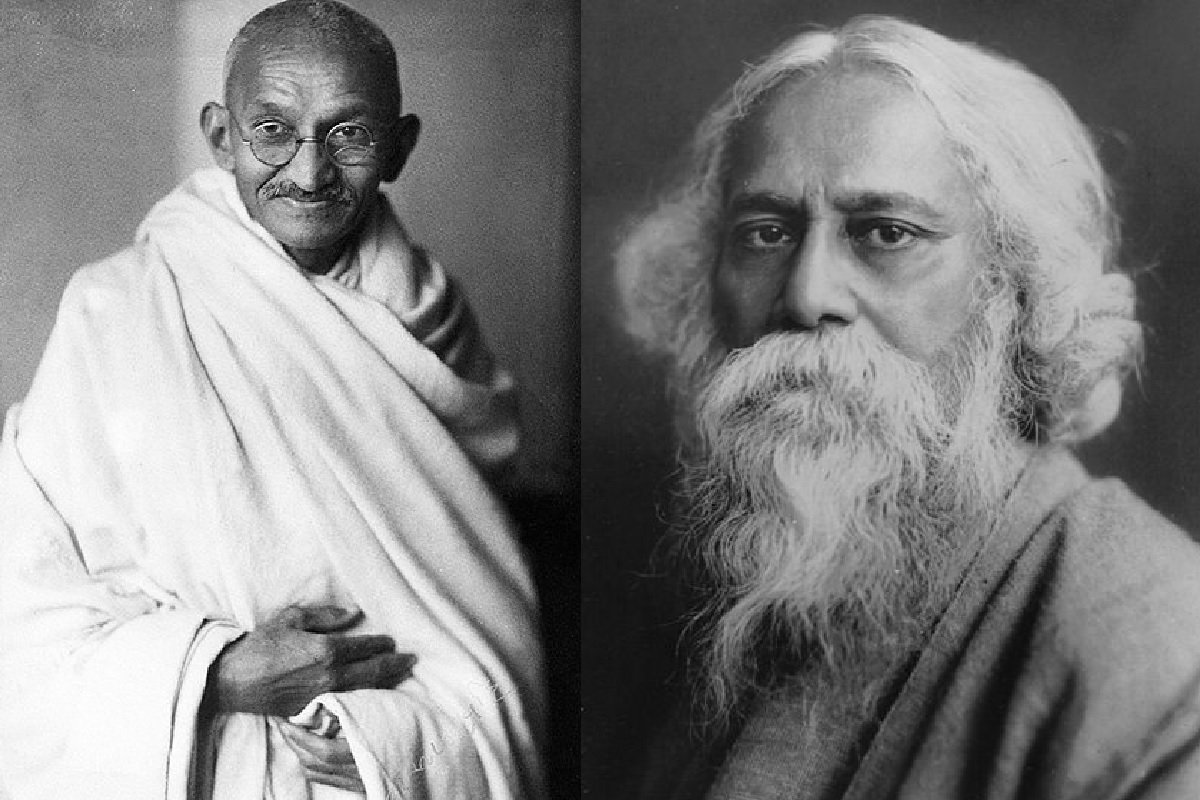Mahatma Gandhi and Rabindranath Tagore, two towering figures in Indian history, had distinct philosophies and approaches towards education and nationalism. Here are the key differences:
Approach Towards Education:
Mahatma Gandhi:
- Basic Education (Nai Talim): Nai Talim is a principle promoted by Mahatma Gandhi which states that knowledge and work are not separate. Rather experiential learning or learning by doing is one the most effective methods. He believed that education should be holistic, integrating the development of the mind, body, and spirit.
- Practical Skills: Gandhi stressed the importance of vocational training and self-sufficiency. He wanted education to be rooted in the local environment and culture, promoting manual labor, crafts, and agriculture.
- Moral and Ethical Values: Gandhi’s educational philosophy was deeply intertwined with his ideas on morality and spirituality. He advocated for character-building and the inculcation of values such as truth, non-violence, and simplicity.
Rabindranath Tagore:
- Vishwa-Bharati: Tagore founded Vishwa-Bharati University, which aimed at blending the best of Eastern and Western educational traditions. He emphasized a broad-based, liberal education that fostered creativity and critical thinking.
- Holistic Development: Tagore believed in the development of the whole person, including emotional, intellectual, and artistic growth. He stressed the importance of arts, music, and literature in education.
- Nature and Freedom: Tagore’s educational approach valued learning in harmony with nature. He advocated for an environment free from rigid constraints, where students could learn at their own pace and explore their interests.
Approach Towards Nationalism:
Mahatma Gandhi:
- Inclusive Nationalism: Gandhi’s vision of nationalism was inclusive and non-violent. He sought to unite Indians across religious, caste, and regional lines in the struggle against British colonial rule.
- Satyagraha: Gandhi’s method of non-violent resistance (Satyagraha) was central to his approach. He believed in achieving political and social change through peaceful means and civil disobedience.
- Swadeshi: Gandhi promoted the Swadeshi movement, encouraging the use of indigenous products and self-reliance to undermine British economic power in India.
Rabindranath Tagore:
- Universal Humanism: Tagore’s nationalism was more cosmopolitan and universal. He believed that excessive nationalism could lead to isolationism and conflict. Tagore advocated for a balance between national pride and global unity.
- Critique of Nationalism: Tagore often criticized the aggressive nationalism that he saw emerging in various parts of the world, including India. He warned against the dangers of narrow patriotism and the suppression of individual freedoms.
- Cultural Exchange: Tagore envisioned India as a part of a larger world community. He promoted cultural exchange and mutual respect between nations, believing that true nationalism should not preclude international cooperation and understanding.
Summary:
- Education:
- Gandhi focused on vocational training, moral values, and self-sufficiency.
- Tagore emphasized liberal arts, holistic development, and learning in harmony with nature.
- Nationalism:
- Gandhi’s nationalism was inclusive and based on non-violent resistance and self-reliance.
- Tagore’s nationalism was more universal, advocating for global unity and cultural exchange while warning against the dangers of extreme nationalism.
Despite their differences, both Gandhi and Tagore made profound contributions to India’s educational and nationalistic discourse, each bringing unique perspectives that continue to influence contemporary thought.


